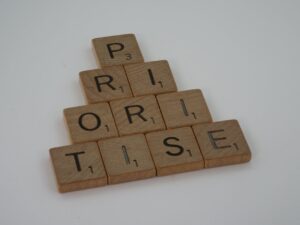There are four levels of situational awareness: Observation, Orientation, Decision, and Action. In this article, we will discuss what is situational awareness? Three levels of situational awareness and how to improve situational awareness skills?
Situational awareness is a personal understanding of the environment (usually about a crisis or emergency). A “sense for the situation” developed from continuous observation of events.
John Boyd was an armed forces strategist who developed the OODA loop. This decision-making model has been adopted by many organizations, including Google, the US Marine Corps, and more. It’s often used to describe how we react to new situations in life and business. The OODA loop comprises four stages: Observation, Orientation, Decision, and Action.

What is situational awareness?
One definition of situational awareness is knowing what’s going on around you and understanding how information and events around you will affect your goals. People who are good at situational awareness can quickly think about what’s happening around them and use that information to make better decisions.
Three Levels of Situational Awareness
We can break down situational into three main parts:
1. Perception – Knowing what is happening around you at any given moment in time. It means being aware of things (e.g., cars), people’s actions (e.g., running towards you), and sounds.
2. Comprehension – Understanding what these things and actions mean to your safety and well-being (e.g., a person running towards you might be trying to attack you; a car driving toward you might be out of control).
3. Projection – Expecting what will happen next based on existing environmental factors (e.g., if a car is moving towards me at high speed, I need to get out of the way, or it will hit me).
The key to situational awareness is confirming that all three parts work together with accuracy and proper time. A person with good situational awareness will not only notice the relevant information, but they will also accurately understand it and know how to react to it effectively.
Why is situational awareness Important?
Because it is a skill that can save your life, we can quickly realize, process, and act on new information when we have good situational awareness.
We are more aware of our surroundings and what’s happening around us, and we react to circumstances as they happen instead of being shocked when something bad happens.
What is OODA?
The OODA loop is a decision-making model created by military strategist and U.S. Air Force Colonel, John Boyd, to explain how human beings process information and make decisions. The OODA loop is used in many fields, including business, learning and teaching, military strategy, sports, psychology, card games, and even sex.
Excellent psychological research has been done on the OODA loop over decades.

Boyd’s original theory was based on a fighter pilot’s experience encountering an enemy. Boyd analyzed and observed how fighter pilots reacted and took action under different scenarios.
He concluded that they all seemed to follow a similar way, which he called the OODA Loop. Boyd taught this same process to his students, and it has been used by many businesses and sports teams since then.
OODA Explanation
Observation:
The first step is to gather information about the present situation. It could be as simple as taking in your surroundings or as difficult as monitoring financial information over some time.
Observation allows us to make an intention of the world and understand what is occurring around us, and it provides us with the mental material we need to train ourselves.
Orientation:
Orientation understands how something marked relates to past incidents and our current knowledge base. It needs us to apply what we have learned from past experiences and connect that with the new information we are taking in.
Perspective-taking makes orientation faster and easier because it allows us to look at a situation from different viewpoints, which helps us see it from multiple angles.
Decision:
Once we have trained ourselves, we can decide what action we need to take. Depending on the situation, this will involve considering different options before selecting.
Sometimes there may be only one option available and no space for decisions, but decision-making becomes more difficult when there are numerous options available.
Action:
The final step is to translate our decision into an action plan and carry out that plan.
How to Improve Situational Awareness Skills?
There are several ways to improve your situational awareness and bypass being caught off-guard, whether at home, driving, or walking. Some of the most useful methods involve taking note of possible dangers and being prepared if the most harmful happens.
Identify Objects around You

Many things around us can divert you from what’s happening, like your smartphone or other devices. Still, these devices can also be valuable tools in creating situational awareness.
For example, if you’re walking down the street and see a car running with no one in it, that could be a sign of danger.
If you’re at work and notice a doubtful person sitting outside, that’s a chance for you to prepare for the most harmful. In both scenarios, taking a quick picture of the car or person with your phone can help you remember what they looked like later on.
Notice Other People
People are usually encountered in situational awareness because we’re so focused on objects and locations around us. But people are essential elements of an overall threat examination.


If someone is staying behind you for too long or following you for no obvious reason, get away from that place as quickly as possible.
Identify Entry and Exit Points
When you’re entering a building or an area where you must pass through a security checkpoint, such as an airport or government building, try to remember where the entry and exit points are located. It will assist you to feel more at ease when entering an unknown place.
You’ll know exactly where to go if something happens at the checkpoint or if there is an emergency way so that you can get out of harm’s way quickly.
Practice Prediction
People often react to situations based on their past experiences and training.
For example, if a shooting has taken place in the past, another will probably occur again at the same location. If it doesn’t happen, they may dismiss their prediction as just an accidental thought. But if their prediction comes true, they will not take it lightly next time around.
Stay out of the Blind Spots
It is important to be aware of what your blind spots are. Blind spots are hidden areas from your eyesight and can make you weak to crime. When walking in public, make sure you look in every direction, particularly when entering a place with weak light.
Following closely behind a person or car is one-way criminals can access your blind spot (the areas you cannot see). If you face a situation where someone follows too near, go out of your way to bypass this person.
Be Alert to your Surroundings
Don’t get too distracted by technology or your thoughts that you miss something happening around you. Take your headphones off and walk with your eyes open if you’re going out at night.
Alert is something we all have to be more aware of as we go about our daily lives. Be smart and be prepared in any situation you find yourself in.
Around Your Vehicle
Defensive driving is a good safety technique. Assume that everyone on the road is trying to kill you, and you won’t be too quick to trust others on the road. You will look for people who may cut you off or try to run you off the road. When that guy comes up behind you, tap your brakes a few times before actually breaking. It will give him a warning, and he may pass you if he sees someone coming up in his rearview mirror.
Check the area before proceeding to your car in a dark parking lot before proceeding. Avoid being diverted by looking at your phone or listening to music, which could affect your situational awareness. When walking through a parking structure, stay near an exit door, so you can quickly get out of there and run for help if needed. Never walk with earbuds when alone at night.
If You Are Personally Threatened
Situational fighting is more about technique than strength. While strength and speed certainly have their place, knowing how to take advantage of a situation (or create your own) will increase your chances of winning a fight.
Most of us won’t find ourselves in an actual life or death situation, but the techniques we discuss below can be useful in any fight.
Keep in mind that you should always avoid a fight if possible. But if you find yourself in one, these are some things to keep in mind:
Always think there’s another person. If you’re fighting one person and they’re backed into a corner, someone else may be behind you, ready to attack. It is best always to assume someone else nearby can help them out.
Look over the person’s shoulder, not directly at them. When you stare at someone now, it gives them a sense of power over you and causes them to become more aggressive. Looking over their shoulder gives you a chance to see what else is going on around you and assess your next move accordingly.
Don’t let them get behind you. If possible, always keep your back against something solid, and it will prevent someone from sneaking up on you.
In Conclusion
Situational awareness skills are essential in various situations for those who work, live, and travel in unfamiliar locations. Having good situational awareness skills helps you increase the likelihood of surviving dangerous situations by determining what is going on around you and then determining why it is happening and the best course of action.
Related Articles
The Gray Man Theory – An Acquired Skill
Martial Law And How To Stay Out Of Trouble
We may receive commissions when you click our links and make purchases. However, this does not impact our reviews and comparisons. We try our best to keep things fair and balanced, in order to help you make the best choice for you.

